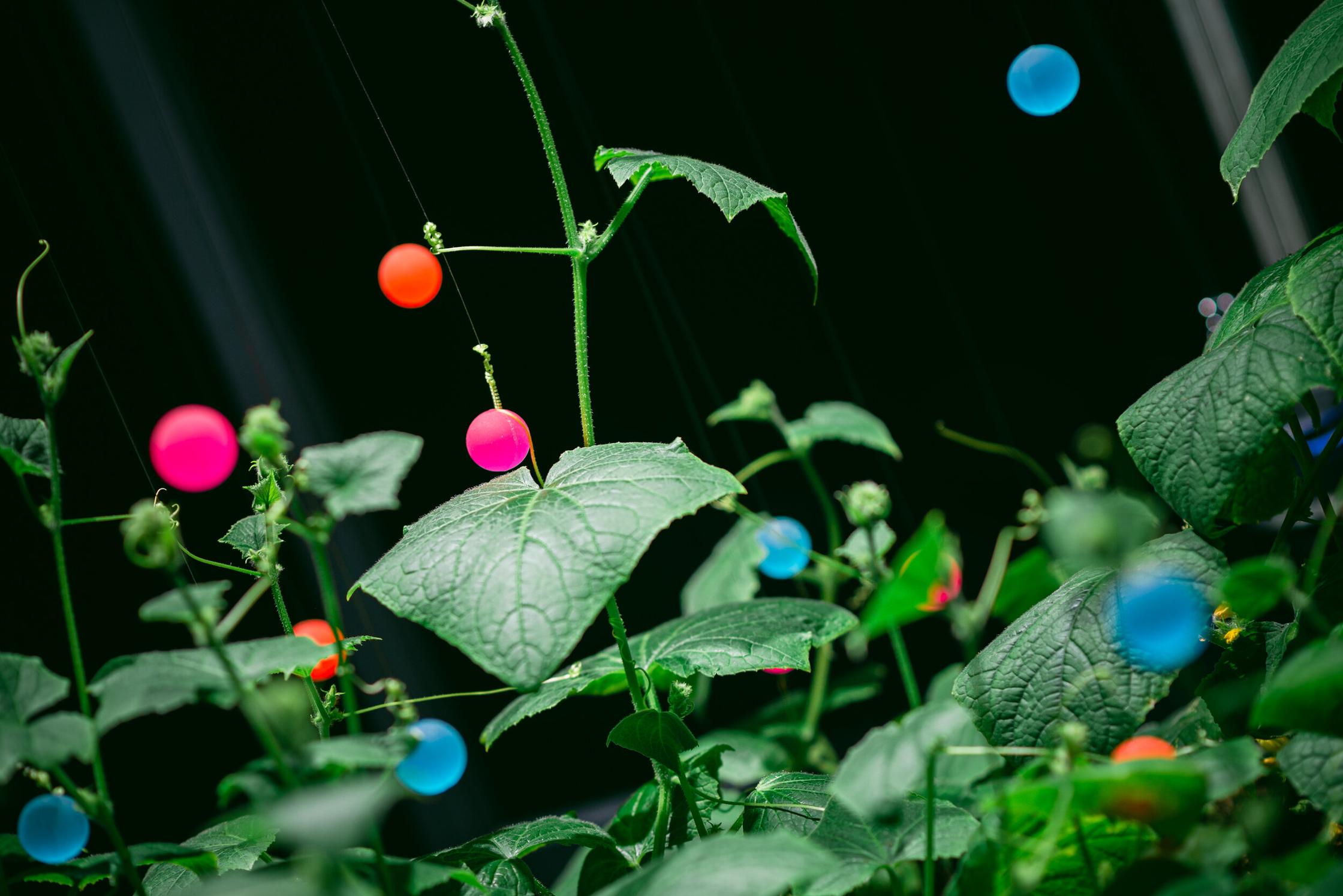Špela Petrič is an artist in residence at Waag, working on the interaction between plants, machines and humans.
Hi Špela, what are you working on at Waag?
I’m part of a project called Smart Hybrid Forms. We work together with Vrije Universiteit Amsterdam and Gerrit Rietveld Academie. V2_ and Zone2Source are also partners. Smart Hybrid Forms explores societal and cultural significance of art-science collaborations in general, and is specifically focused on relations between plants and machines.
The point of departure was the question: what would it mean to make an artificial intelligence (AI) that thinks of itself as a plant? This idea is derived from my curiosity about the wider relationship between people and plants as well as the increasing use of machine learning algorithms that inform our understanding of the world.
What work did you create for Smart Hybrid Forms?
Our interdisciplinary team created PL’AI, which is a work about play between an AI and a cucumber plant. PL’AI questions how we can employ technology to engage with plants as complex beings that have all the capacities to thrive, just as people do, only expressed in radically different forms.
The goal is to open up the imagination of the relation between AI as a human extension and plants. PL’AI is not a game that aims at producing a winner, but it's instead about play as a form of exploring what the body can do. Games work by following a certain set of rules or structure, whereas play allows for more space and freedom of bodies. Like the way in which a baby plays with their fingers or a cat with yarn.

What does PL’AI look like when you walk into the room?
You see a three meter tall robot, which at the top has 36 reels with stainless steel threads. Orange, blue and pink bouncy balls are attached at the end of the threads. I chose bouncy balls to hint at playfulness but also to remind us that the interaction between the cucumbers and robot very much involves people, too - people created AI, robots as well as the desire to connect with plants. Underneath the bouncy balls, there is a tray in which cucumber plants are growing.
When the plants are a month old, they start growing tendrils. The tendril searches something to grab on to. Once the plant grabs hold of one of the bouncy balls, which is captured by the camera, this signals the AI to stop that ball from moving. Apart from the camera, the AI also gets input from a 3D scanner on a trolley which scans the plant in three dimensions every 15 minutes.

Contact also gives feedback to the algorithm, which is thereby forming the future movements of the robot. In this way, the shape of the plant and robot forms through unpredictable interaction.
What happens next?
With every scan, the AI’s mental image of the plant is changed and refined. I’ve been watching the images that the AI creates but cannot make any sense out of them. It looks like randomness, like noise. And yet when you see the timelapse with the balls moving, you see the sensitivity, mistakes and surprises of the robot’s imagination of the plant. The robot doesn’t interact directly with what it sees, but with this abstract form of the plant that changes through time.
People often think of nature and artificial intelligence in opposition to each other. How did this idea come into existence?
Nature is commonly used to refer to that which isn’t under control of people, that which is opposite of culture. Technology, by definition, is the expression of human skill, and artificial intelligence is at the moment the state-of-the-art of technology.
In PL’AI we are not observing nature in general, but specifically plants, which have been historically considered as simple, mechanical life. This is the legacy of the Western philosophical tradition from antiquity onward. Aristotle ordered living beings in a hierarchy of life, which was taken up by Christianity to establish the Great Chain Of Being - in progression from minerals to plants, animals, humans and finally God, each level possessed increasingly commendable qualities.
At the border between living and inanimate were plants, without an internal world, fixed in place and therefore at the mercy of the environment. The next step were animals, able to move but lacking rationality. They are followed by humans who act autonomously and have a mind and an internal world of their own. Lastly, gods are the highest entities. The higher on the hierarchy, the closer you are to God, the more worthy you are as a being.
What did you wish to convey with PL’AI?
I wanted to reframe our relationship with plants through play, by creating an alternative for the current hierarchical, rational way of thinking that eventually led to a disenchantment of the world. Play is an activity that you do for itself, as something pleasurable. With plants you don’t see emotions like play and pleasure, but does that mean that it doesn’t exist?
There’s no scientific way of really determining whether something is play or not. You know it when you see it. That’s the beauty of it. I hope that eventually, this will lead to a different kind of ethics.
What are the next steps for PL’AI?
Right now, we want to bring the former input together to create an AI that thinks like a plant. It will be called Exultopia: a utopia that is created for the pleasure of the plants. And once the lockdown is lifted, PL’AI will be on display at MU Hybrid Art House in Eindhoven. The work will afterwards be exhibited at Kresija Gallery in Slovenia.

